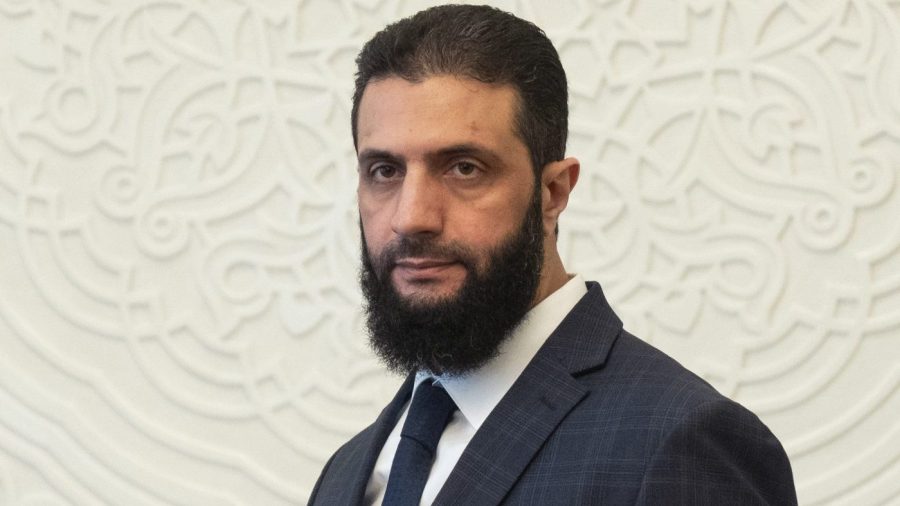
Syrian history presents many lessons for Hayat Tahrir al-Sham, the radical Islamist group now leading a transitional process there, and those who wish to see a peaceful, secular and democratic Syria.
In 1970, Hafez al-Assad took power in Syria after a coup he dubbed the “Corrective Movement.” This was after years of intense conflict within the Baath Party, beginning with the 1961 coup ending Syria’s union with Egypt. A 1963 coup established Baath rule, ushering in a period marked by further coups, purges and the 1967 defeat against Israel in the Six-Day War, leaving the nation deeply fractured. Amidst this turmoil, the elder Assad emerged as a pragmatic leader, gaining support from key military, Alawite and Baathist figures, and aptly timed his seizure of power.
The current situation bears striking similarities to those formative years. Assad’s rhetoric of not exporting the socialist revolution mirrors the disavowal of global jihad by the newly ascendant organization’s leader, Ahmad al-Sharaa. Both figures sought to consolidate power by appointing an inclusive interim leadership — one that balanced the representation of different communities, while, in cooperation with a small clique, they wielded power behind the scenes.
With al-Sharaa, we must wait until the transitional government is formed to see this strategy in action. But his pragmatic approach so far strongly points in this direction. The transitional government that is likely to emerge soon will probably be diverse, but Al-Sharaa is expected to continue relying on the small group he has admitted feeling more comfortable with — those who helped shape governance in Idlib, his longtime stronghold in northern Syria.
Even as Hafez al-Assad maintained a socialist discourse, he softened the secular tone of his predecessors’ rhetoric, incorporating Islamic references to appeal to the broader population. Al-Sharaa remains grounded in his Islamist ideology, yet his analysis of Syria’s needs and the regional context often adopts a more pragmatic secular tone. Assad softened some of his predecessors’ hardline socialist policies, while Al-Sharaa has embraced free-market economics and rolling back trade barriers. Both men initiated constitutional changes to secure their dominance. Assad waited three years before introducing his 1973 Baathist constitution. Al-Sharaa is asking for three years before introducing his constitution, which is likely to have a strong Islamist tone if he and his group have their way.
These parallels may not be coincidental. Islamists, despite despising Hafez al-Assad, long admired his pragmatic, calculating leadership. Al-Sharaa, whose father knew Assad personally, may well carry these lessons forward.
Syria has faced such transitions before. Unless secular, pro-democracy advocates learn from the past, we risk falling into the same traps.
But today’s context offers opportunities. Reconstruction requires significant foreign investment and long-term support, contingent on respecting communal rights, women’s rights and individual rights. Secular advocates like myself must insist on a greater role in decision-making and emphasize that Al-Sharaa’s refusal to adopt power-sharing will delay reconstruction and prolong Syria’s suffering.
The secular movement in Syria is far from small. The Druze (3 to 5 percent), Christians (3 to 5 percent), Alawites (8 to 12 percent) and Kurds (12 to 15 percent) all have a vested interest in supporting secularism for communal reasons. Beyond them, many Arab Sunnis are secular as well, with a significant portion belonging to secular leftist parties, though the exact percentage remains unclear. Together, these groups could make up more than half of Syria’s population.
Under ideal conditions, a majority might favor a secular state in a national referendum, though current conditions make such a vote impractical. The four-year transitional period proposed by Al-Sharaa could work to our advantage if we organize and act decisively. Failure to do so risks ceding this opportunity to his group’s supporters, allowing them to further consolidate their hold on power.
History underscores these stakes. When Baath officers staged their 1963 coup, the unity government already included equal representation for the Baath Party and the Muslim Brotherhood. The subsequent power struggle marginalized liberals and pushed the Islamists underground. Their return in the late 1970s culminated in the 1982 Hama Uprising, where Assad and his brother Rifaat bombed sections of the city, killing between 15,000 and 40,000 inhabitants, depending on the source. According to testimonies from survivors, many cold-blooded massacres occurred once Assad’s troops moved into the city.
Al-Sharaa’s incipient regime represents a more radical form of political Islam than that espoused by the Muslim Brotherhood. However, the group has shown no interest in revenge for past atrocities by the Assad regime, father or son. This pragmatism is encouraging.
But is this approach a tactical ploy to buy time, as Assad did in 1970, or a genuine shift? If it’s the former, Syria risks a new form of ideological authoritarianism with Islamism at its core. If it’s the latter, a better-organized secular movement could leverage shared goals of peace and reconstruction to forge a workable arrangement, avoiding past mistakes.
The U.S. has a pivotal role here. Sanctions and international aid are powerful tools to encourage all sides to reach an agreement. By leveraging these, America can guide Syria’s transition and secure a legacy of promoting stability and rebuilding in the region. President-elect Trump could oversee this entire transition successfully by the end of his second term, marking a significant element of his foreign policy legacy.
Ammar Abdulhamid is a Syrian-American pro-democracy activist and a parliamentarian and director of policy at the World Liberty Congress.

